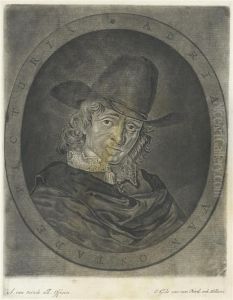Jacob Gole Paintings
Jacob Gole was a Dutch Golden Age artist known primarily for his work as a mezzotint engraver. Born in 1660, Gole was part of a period in art history that is celebrated for its significant contributions to painting, printmaking, and other forms of visual arts. Although not as widely recognized as some of his contemporaries, Gole nonetheless made a notable impact in the field of printmaking.
His work often involved engraving portraits and reproducing popular paintings of the time. Gole's engravings were characterized by the rich tones and subtle gradations of light and shadow that are hallmark features of the mezzotint technique. Mezzotint, a method of printmaking that allows for the creation of images with a wide range of tonal variation, was particularly suited to capturing the textures and depth found in paintings and other visual media.
Jacob Gole was active in Amsterdam, a hub of artistic activity in the 17th century. He produced prints after works by prominent artists of his time, which helped to disseminate their compositions more widely. By translating paintings into prints, Gole played a role in the broader distribution of artistic styles and subjects, thus contributing to the dissemination of cultural and aesthetic ideas beyond the elite circles that had access to original artworks.
Gole's career spanned several decades, and throughout this time, he contributed to the evolving landscape of Dutch printmaking. His works are part of the historical record that illustrates the exchange between painters and printmakers and the collaborative nature of artistic production during the Dutch Golden Age. Jacob Gole passed away in 1724, leaving behind a body of work that reflects the rich artistic traditions of his time and the enduring legacy of the mezzotint technique in the history of art.
